#aa sca yr 3 sem 1 week 8
Text
Art Studio 1 Experimentation: Soundscape mock-up for Forest Reserve (27.4.24-29.4.24)
When making the soundscape mock-up, I split it into two parts:
Terrestrial biophony/geophony (some of the recordings from the 2.4.24 and 6.4.24 outings)
The accompanying digital anthropophony/digital music (from the earlier Ableton tests)
For the terrestrial biophony/geophony, I also used a recording of a kookaburra calling from 21.12.24.
Some effects were added to a few of the Adobe Audition tracks (seen in the preview below), such as Full reverb ('echo') for greater immersion (i.e. illusion of being in a wide forested landscape) and DeNoise to remove any noise from the raw sound.
The digital music tracks I used here were 'E-Dreamy Piano Test Track 2' (EPD) and 'Mouse Arp Synth Rhythmic Track' (MASR). I felt they would pair well with the bird calls (both EPD and MASR), insect buzzing (MASR), and water rushing into the creek (EPD).
Each track was altered to prevent 'audio clashing' for a more pleasant listening experience.
Reflection:
I am happy with how the biophonic/geophonic sounds were incorporated, but perhaps the digital music (anthropophony) could be integrated in a more natural manner.
Is it better to use one digital music track instead of two (for a better listening experience)?
I may try experimenting with Adobe Audition's other features (perhaps things like panning audio for greater immersion - however, this specific one may depend on things such as the setup of my installation).

0 notes
Text
Art Studio 1 Experimentation: Projection test (20.4.24)
Below are three fabrics I used for the projection sheet, in order from thickest to thinnest:
Batiste
Premium muslin
Open-weave (kitchen) muslin


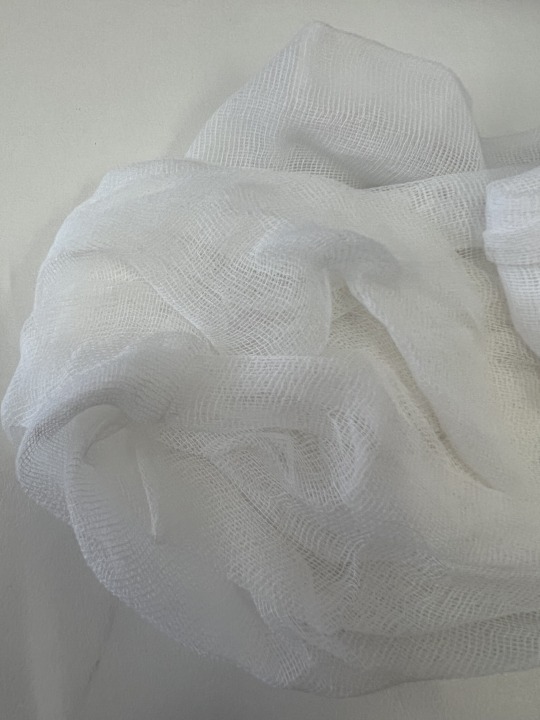
The purpose of this test was to see which of these fabrics would act as a good 'overhead screen' (i.e. catching enough light for the image to be most prominent) for the viewers underneath.
As I wasn't able to book a projection test in the production studio at the time, I decided to practice with a more rudimentary installation in the garage, where a projector (not a vertical one) could be used.
The images below show the animation tests on batiste (rows 1 and 2), premium muslin (row 3) and muslin (row 4).
Batiste was most successful in capturing the most light for the image to be most prominent in the dark.
However, I should note that muslin has a textural element.
I also conducted a test where two pieces of fabric were layered: batiste (closest to the projector) and , which managed to give the projected image an interesting texture (but is the texture even needed?).


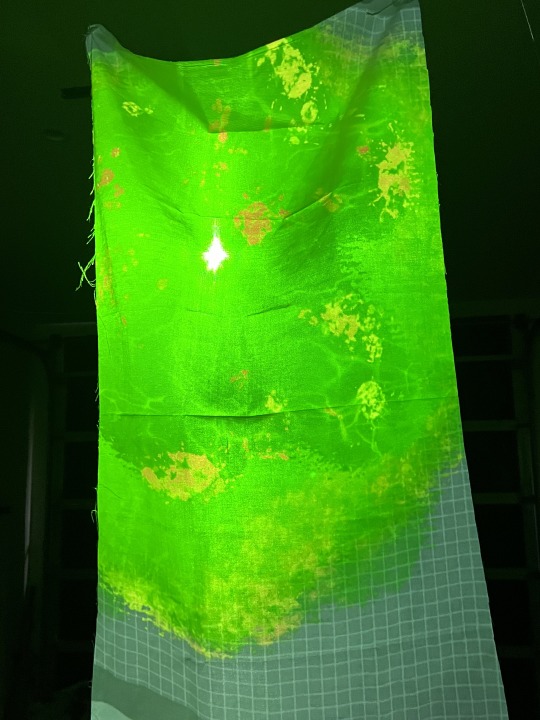

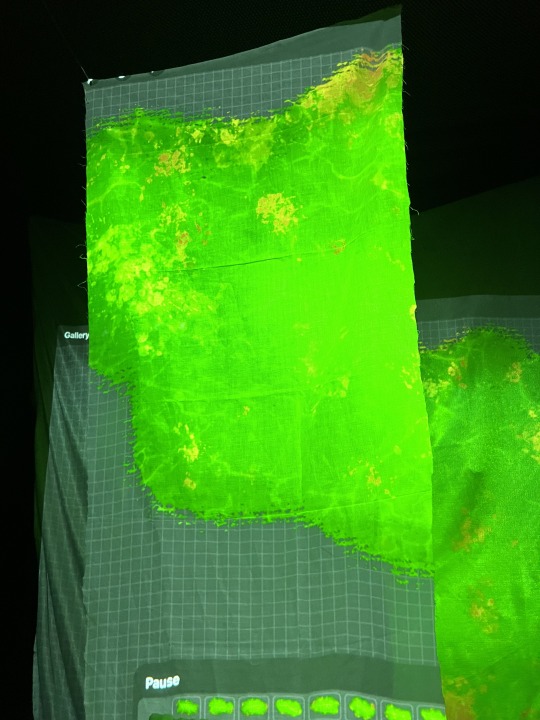

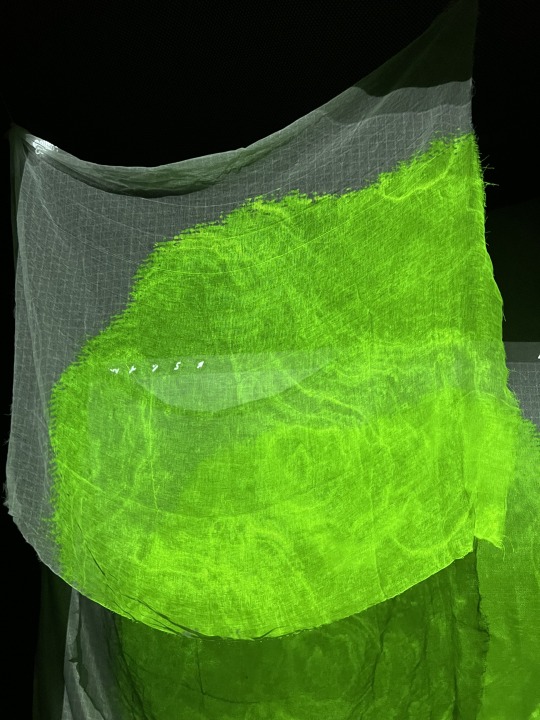

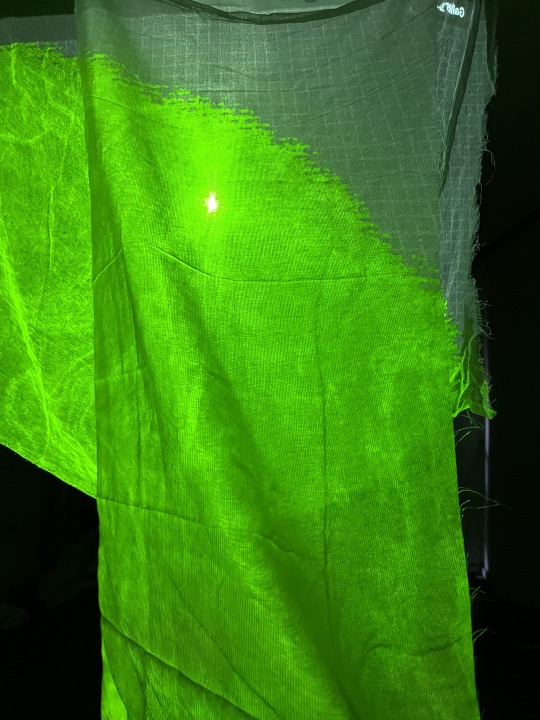
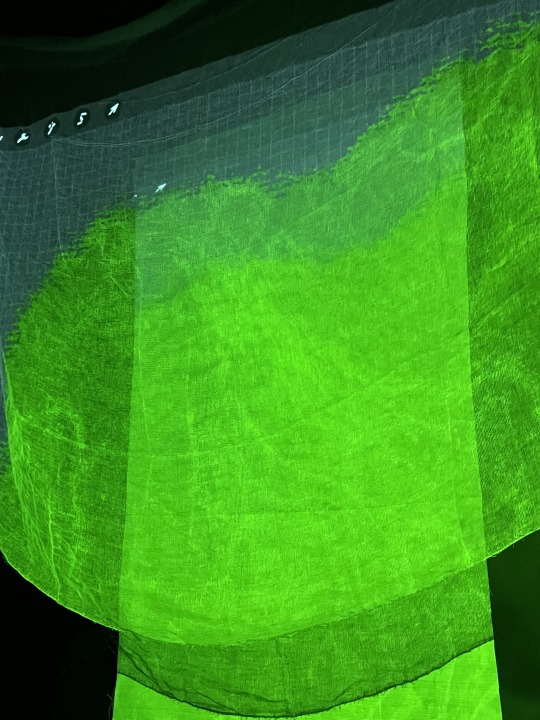
0 notes
Text
Art Studio 1 Lectures (19.4.24)
Lecture: My experiences in artistic research and practice (by Jacky Redgate)
Art school years (1977-1981):
1977-1979: "Combined realist and conceptual female experiences..."
Her works mainly "incorporat[ed] themes of emigration, motherhood, marriage, family and illness through [her] use of autobiography and dream[s]..."
Main techniques: photography, analogue film, performance installation and body casting/sculpture.
"Looking back now at my art school work at this time [1977-1979], I can see that art history, dreams and memory were more important to me than to many of my peers."
During the early years of the feminist art movement, she was involved in the Women's Art Movement, the Women's Art Group, the Feminist Art Theory, and in performance/screening events at the Media Resource Centre and the Experimental .
Artwork examples from the lecture:
Her Work to Rule series (original photographs - 1986-1987, negatives - 2018), Photographs March 1959 (reproduced in 2015) and Light Throw (Mirrors) Fold 1–10 (2014-2015) are among the many works drawn from Redgate's fascination with mirrors.
This fascination is with regards to how they interact with time, light and space, as well as their relationship to dreams ('hypnogogia' = the dream-like state between wakefulness and sleep, which accompanied by sensory hallucinations) and the self (she stated that she has been self-conscious about her own image in mirrors and photographs).
Like Photographs March 1959 (reproduced in 2015), the Untitled Day series (1999-2000) was influenced by the concepts of mirroring and the doppelgänger (since she has a non-identical twin sister).
The exhibition Hypnogogia with Mirrors, Old and New Works (1977-2023) explores the ideas of archives, memories, and reflecting upon personal traumas. In Redgate's case, her traumas about her immigration to Australia (when she was 11) were documented through her childhood diary.
These themes continue in her short film Mother England (1980), which focuses on the history between Australia and England, and her own experiences with immigration and with growing up in both countries.
In Wedding Wishes (1977) and the Untitled (Rosebud) series (1979), dolls and other childhood ephemera act as manifestations of personal memories, comforts and traumas, as well as the transitional period between childhood and adulthood.
There are plenty of other resources for these works, but I've provided a link to the webpage for the works included in Hypnogogia with Mirrors, Old and New Works (1977-2023), with a downloadable copy of the exhibition catalogue:
Practice-based research (group discussion notes from Oliver Smith)
Framing the learning/discovery/understanding generated in the studio:
Learning new processes - such iterative engagement is where their potential can be observed.
Consider the materials and/or materiality of your work.
Possible line of thinking with executing the idea: Commit to the idea -> Experiment and decide -> Refine
Interplay between the technical and the conceptual aspects of the work.
It is important to visualise the work, both in the specifics of the materials AND in the specific details of how you envision the work within a space.
Important to test potential directions for the work, which may open up new methodologies and resolutions.
Experiments/WIPs for my project (discussions with Oliver Smith and Jacky Redgate)
What I've done so far (some of my posts from previous weeks):
Recording the primary sounds (terrestrial biophony/geophony)
Making the secondary digital musical soundtracks in Ableton
Creating visual studies for my animated segments
Developing an animation test for how these segments may look
What I plan to do until I need to show my WIP presentation:
Continuing recording the primary sounds (aquatic biophony/geophony and biological anthropophony)
Testing the projection with the different fabric samples
Perhaps revise the installation concept (sketch)?
Creating a couple of test soundscapes
Perhaps creating another animation test???
0 notes